Introduction
Cake chiffon is one of the most beloved desserts, known for its airy texture, delicate crumb, and versatile flavors. Unlike traditional sponge cakes, chiffon cake blends the best of both butter and sponge cakes, resulting in a moist yet fluffy treat. In this article, we’ll explore the secrets behind the perfect cake , its history, techniques for achieving the ideal texture, flavor variations, and expert tips for decorating and serving.
The Origins and Unique Qualities of Cake Chiffon
The History Behind Cake
Cake was invented in the 1920s by an American baker named Harry Baker. For years, he kept his recipe a secret until he sold it to General Mills, which popularized it nationwide.
What Makes Chiffon Cake Different?
Unlike traditional sponge or butter cakes, cake is made using oil instead of butter, giving it a moist texture while maintaining a light and airy structure.
The Role of Egg Whites in Cake
Beaten egg whites play a crucial role in Airy sponge cake, providing the cake with its signature fluffiness. The whipped egg whites create an airy structure that holds up even after baking.
Why Chiffon Cake Is a Versatile Dessert
Chiffon cakes can be infused with various flavors, from citrus and vanilla to chocolate and coffee. They can also be paired with different frostings, making them a go-to option for any occasion.
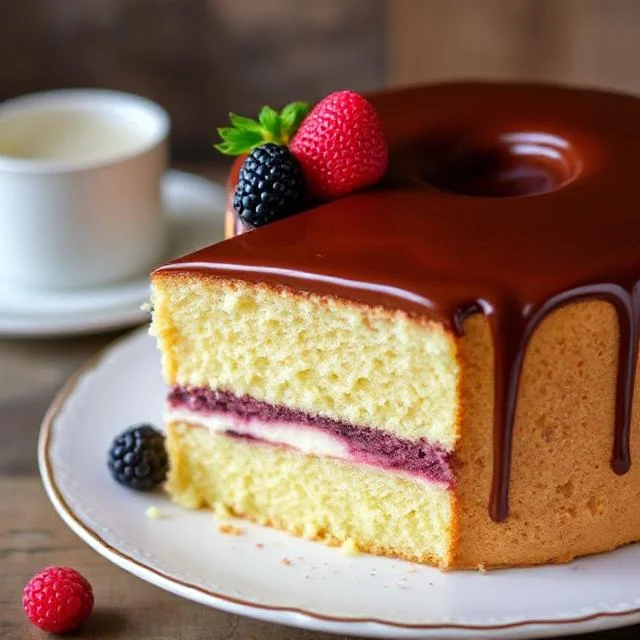
Vintage Advertisement for Cake – A Nostalgic Look at Its Popularity.
Mastering the Perfect Cake Chiffon: Techniques and Tips
Choosing the Right Ingredients for a Flawless Texture
Using cake flour instead of all-purpose flour ensures a soft crumb, while fresh eggs help achieve maximum fluffiness.
The Importance of Proper Mixing
Overmixing can deflate the batter, while undermixing can lead to an uneven texture. Folding techniques ensure that air remains in the batter.
Why Baking Temperature and Time Matter
Baking chiffon cake at the correct temperature prevents it from sinking. A gradual cooling process helps retain its structure.
Common Mistakes to Avoid When Making Chiffon Cake
Mistakes such as using a greasy pan, under-whipping egg whites, or skipping the cooling step can affect the final outcome.
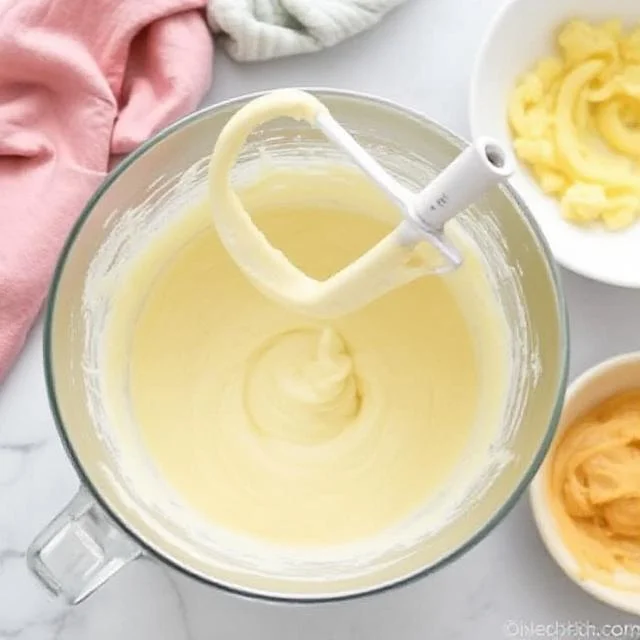
A Step-by-Step Guide to Mixing Cake Batter
Exploring Delicious Chiffon Cake Flavors
Classic Vanilla Chiffon Cake
A timeless favorite, vanilla Airy sponge cake is light and flavorful, perfect for pairing with fresh berries or whipped cream.
Decadent Chocolate Chiffon Cake
For chocolate lovers, this variation combines cocoa powder and melted chocolate for an ultra-rich yet airy dessert.
Refreshing Lemon and Orange Chiffon Cake
Citrus Airy sponge cakes add a zesty twist, making them a great option for summer desserts or afternoon tea.
Unique and Creative Flavors to Try
Other flavors like matcha, coffee, and coconut bring an exciting variation to traditional chiffon cakes.
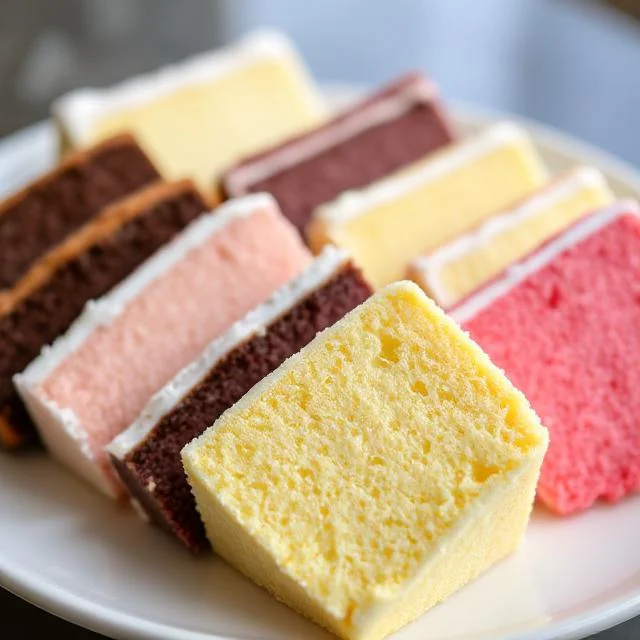
Slices of Different Cake Flavors on a Dessert Platter.
Decorating and Serving Ideas for Chiffon Cake
Simple and Elegant Presentation
A light dusting of powdered sugar can enhance the natural beauty of cake without overwhelming its delicate flavors.
Pairing Chiffon Cake with Frostings and Toppings
Whipped cream, fruit compotes, or a light glaze can complement the airy texture of cake.
Chiffon Cake for Special Occasions
Chiffon cakes are ideal for birthdays, weddings, and celebrations due to their versatility in decoration and flavor options.
Storing and Maintaining Freshness
Proper storage in an airtight container helps maintain the cake’s moisture and texture for up to three days.
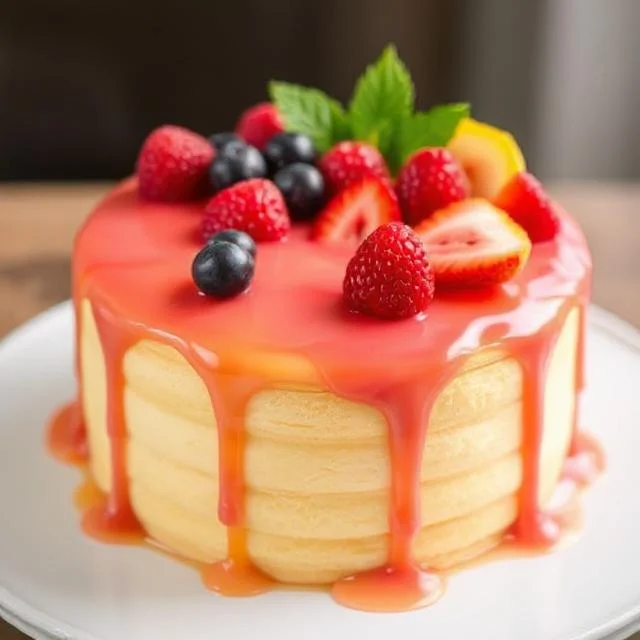
Beautifully Decorated Cake with Fresh Fruits and Glaze.
Expert Tips for a Foolproof Chiffon Cake
Using the Right Pan
A tube pan with a removable bottom helps the cake bake evenly and maintain its structure.
Cooling Upside Down: The Secret to a Stable Cake
Chiffon cakes should be cooled upside down to prevent deflation and preserve their airy texture.
Achieving the Perfect Slice
A serrated knife works best for cutting cake without compressing its delicate crumb.
Troubleshooting Chiffon Cake Problems
If your cake collapses or turns out too dense, adjusting mixing techniques and oven temperature can help improve the outcome.
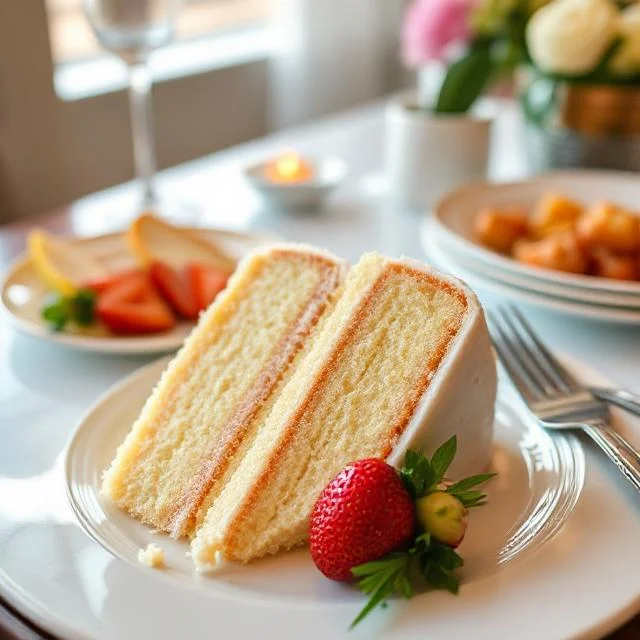
Step-by-Step Cooling Process for Cake
Conclusion
Cake is a masterpiece of baking—light, airy, and versatile. Whether enjoyed plain or adorned with delicious toppings, it remains one of the most beloved desserts worldwide. By mastering the right techniques, choosing the best flavors, and avoiding common pitfalls, you can create a perfect chiffon cake every time. Try experimenting with different flavors and presentations to make this dessert your own!
Advice
Preparing aAiry sponge cake requires precision and care to achieve its signature light and airy texture. Start by ensuring all ingredients, especially eggs, are at room temperature for optimal mixing. When whipping egg whites, use a clean, grease-free bowl and whisk until stiff peaks form—this step is crucial for creating the cake’s delicate structure. When incorporating the whipped egg whites into the batter, use a gentle folding motion to retain as much air as possible. An ungreased tube pan is essential, allowing the cake to cling to the sides and rise evenly. After baking, immediately invert the pan and let the cake cool upside down to prevent collapse and maintain its fluffiness. By following these steps, you’ll achieve a perfectly soft and airy cake every time.

